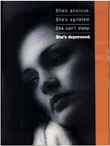Outpatient psychotherapy in the United States, I: Volume, costs, and user characteristics
Abstract
OBJECTIVE: This article provides an overview of the volume, composition, and costs of outpatient psychotherapy in the United States. METHOD: Data were analyzed from the household section of the 1987 National Medical Expenditure Survey. The authors determined the volume and distribution of psychotherapy visits by provider specialty, setting, source of expenditure, and reason for visit. An examination was made of the demographic characteristics, health status, and mental health utilization profile of psychotherapy users. RESULTS: In 1987, Americans made 79.5 million outpatient psychotherapy visits at a total cost of $4.2 billion. Most of these visits were to mental health specialists (more than 80%) and were reported to be for the treatment of mental health conditions (63.5%). However, psychotherapy was not provided in a substantial proportion of the visits to mental health specialists (21.1%) or the visits to treat mental conditions (29.8%). Separated and divorced persons, females, whites persons aged 35 to 49 years, and those with more than 15 years of education had a greater likelihood of using psychotherapy. Psychotherapy use was also greater among persons in poor general health and those reporting health-related functional impairments. General medical costs of psychotherapy users exceeded those of nonusers. CONCLUSIONS: Psychotherapy accounts for approximately 8% of outpatient medical care costs. Users of psychotherapy appear to be more distressed than is commonly assumed: they report poorer general health, higher general medical costs, and more functional impairment than nonusers. Although mental health specialists commonly provide psychotherapy to treat mental disorders, all mental health care is not psychotherapy.
Access content
To read the fulltext, please use one of the options below to sign in or purchase access.- Personal login
- Institutional Login
- Sign in via OpenAthens
- Register for access
-
Please login/register if you wish to pair your device and check access availability.
Not a subscriber?
PsychiatryOnline subscription options offer access to the DSM-5 library, books, journals, CME, and patient resources. This all-in-one virtual library provides psychiatrists and mental health professionals with key resources for diagnosis, treatment, research, and professional development.
Need more help? PsychiatryOnline Customer Service may be reached by emailing [email protected] or by calling 800-368-5777 (in the U.S.) or 703-907-7322 (outside the U.S.).



